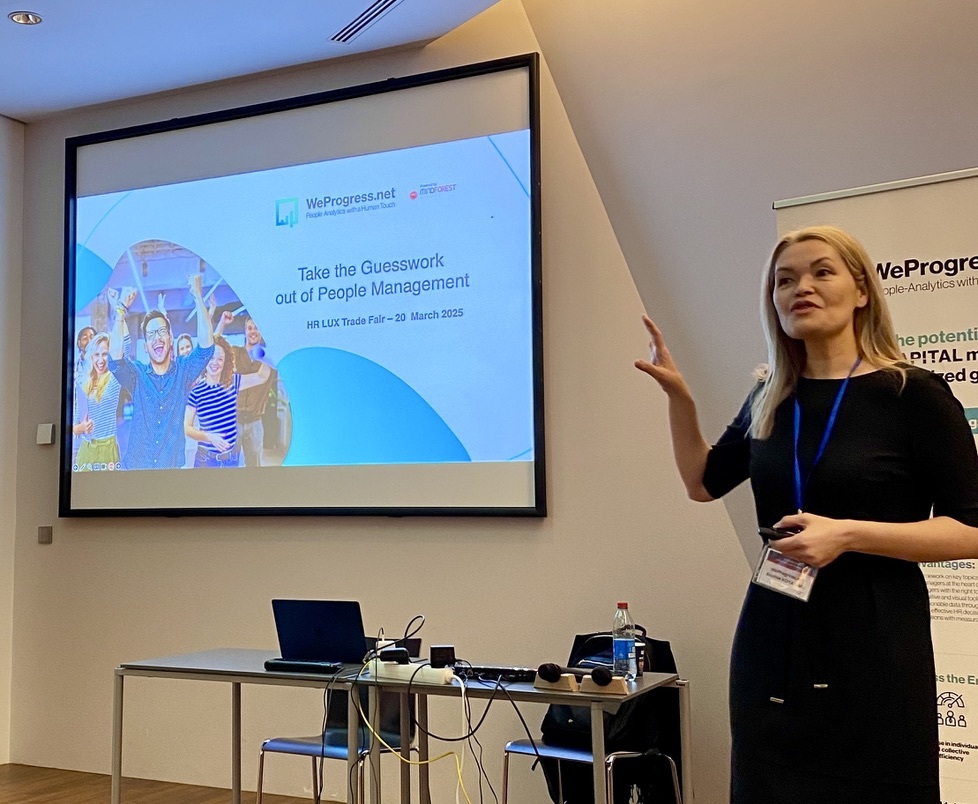Employee motivation and engagement
Today, the key to success for many companies is keeping employees not only motivated but also engaged. This is especially crucial for smaller companies, as they often have difficulties in recruiting. This constitutes all the more reason for SMEs to consider the commitment of their employees and to attribute a maximum of assets to talent retention.
The theory of motivation
Motivating and engaging employees is not a 21st century or start-up issue….
As early as the 20th century, the term “motivation” appeared and with it, theories on motivation. First of all, there was Frederick Winslow Taylor who, with the scientific organisation of work (SOW), reviewed the division of labour in order to obtain maximum output. To do this, he analysed production methods, introduced the ‘best way’ to produce, and above all, provided more attractive and motivating pay conditions for workers (by redistributing productivity gains through bonuses for workers).
In 1954, Abraham Maslow developed a theory according to which a person’s motivations result from the unsatisfaction of certain needs. These human needs were defined as hierarchical (physiological needs, a need for security, belonging and recognition) and follow one another in order to reach self-fulfilment.
Maslow’s theory is still taught today and remains one of the great theories of management and marketing. However, other models have since emerged, including Herzberg (1971), Vroom (1964), MacGregor (1960), McLelland (1961) and Alderfer (1972) and his ERG (Existence, Relatedness and Growth) theory.
Finally, the self-determination theory of Edward L. Deci and Richard Ryan is one of the most successful theories. The two authors distinguish three innate needs, which when satisfied, support optimal functioning and contribute to the generation of growth: competence (the need to master experience and outcome), autonomy (the need for the individual to feel that (s)he is in charge of choosing his or her own actions and behaviours) and familiarity/belonging (the universal desire to interact with, be connected to and be supported by others).
In 40 years, this approach has become one of the major theories on human motivation. Initially developed by Edward Deci and Richard Ryan, it has been refined by several researchers over the years and allows us to answer questions not only about motivation, but also about commitment.
MOTIVATION AND ENGAGEMENT
But what exactly do we mean by motivation and engagement?
Motivation…
Motivation in a company can be summarised by the desire to fulfil a need or an objective, for example financial: to receive a salary, or psychological: to acquire a status in society. Motivation thus corresponds to motives (material, psychological related to the work or the work environment).
Some authors and theories distinguish between three types of motivation:
- motivation for pleasure
- motivation to obtain a reward (e.g. a raise, a bonus) or to avoid punishment
- motivation that is characterised by the absence of a reason to act
…vs. Engagement
Commitment goes beyond satisfaction with a person’s work and their motivation.
For the authors, commitment would be defined as the interrelation between a set of factors. Commitment is something that the employee has to offer, it is not something that can be demanded. It requires and implies active participation, whereas motivation does not, as motivation refers to a simple relationship to a goal or goals.
Commitment requires the involvement of the individual in his or her work, but also with colleagues, and more globally in the work environment. There is commitment when the individual and his or her values are in line with the values, mission and vision of the company.
"Motivation is the force that drives [a person] to take the first step towards action, [...] commitment is [that] which propels them, leads to taking the second and subsequent steps..”[1]
Motivation can therefore be equated with personal gain and may not always be in the interest of the company. And this is where motivation and commitment differ.
THE IMPORTANCE OF ENGAGEMENT IN SME’S
The role of human resources
Employees, human resources, are a factor for growth and competitiveness. Of course, there are other factors that contribute to the success of companies, such as innovative products, quality of service and a solid strategy, but none of these can be implemented effectively without (committed) employees. Indeed, studies show that an organisation with committed employees generates more revenue, is more productive and reduces costs. According to a study by Towers Perrin, a company’s performance is directly linked to the commitment of its employees.[2] And it is precisely this that makes employee commitment a crucial element for SMEs, which account for 67% of jobs in Europe and 69% in Luxembourg.[3]
However, human resource management in SMEs is often confined to personnel management and payroll. It is therefore a real challenge for such companies to address human resources in their entirety, as they are all the more easily destabilised by HR problems (recruitment difficulties, loss of knowledge and skills when an employee leaves, etc.).
Commitment in action
With engagement, we are not only dealing with rational factors, but also with emotional ones. Indeed, an engaged employee goes beyond simply understanding the vision of the company and the direction in which it is going, (s)he believes in the vision of the company and is loyal to his/her employer. As described above, they do not work just for the salary, or with the aim of promotion, but for the goals of the organisation, and will (for example) be prepared to work overtime without being asked to…
This employee will also encourage his/her colleagues to adopt the same state of mind, conversely, a disengaged employee will act as a parasite, and will adopt a negative and toxic behaviour: by discrediting the work of others, which can have consequences for the commitment of other employees and therefore for the company (demotivation, burnout, resignation, non-existent employer brand).
Let us help you!
WANT TO RECEIVE OUR LATEST THOUGHT LEADERSHIP CONTENT?
Related posts
 Take the Guesswork out of People Management
Take the Guesswork out of People Management
 From processes to people: achieving quality
From processes to people: achieving quality
 Daring to lead Positive Transformation: What if Positive Emotional Capital was your key to sustainable change?
Daring to lead Positive Transformation: What if Positive Emotional Capital was your key to sustainable change?
 Why hire Change management professionals? We can do it alone!
Why hire Change management professionals? We can do it alone!
 Digital Transformation and Change Management: Lessons shared in an event hosted by Cebi and MindForest
Digital Transformation and Change Management: Lessons shared in an event hosted by Cebi and MindForest



